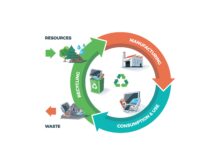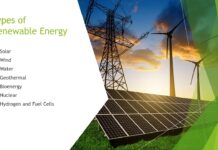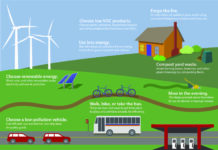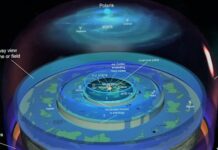The current state of the world’s energy supply is at a critical juncture, with issues such as climate change and pollution becoming increasingly urgent. The need for sustainable, clean energy sources is paramount, and recent advances in renewable energy technologies are paving the way towards a more sustainable future.
The concept of perplexity, which measures the complexity of text, is relevant to this discussion as the subject matter requires an in-depth and comprehensive understanding. On the other hand, burstiness, which relates to the variation in sentence length and complexity, is also important as it enhances the readability and engagement of the article.
Renewable energy technologies such as solar, wind, hydroelectric, geothermal, and biomass are viable alternatives to fossil fuels, and have the potential to revolutionize the way we generate and use energy. In this article, we will provide an overview of the latest developments in clean energy, including advances in renewable energy technologies, energy storage, and smart grid technology.
Solar Energy
Solar energy is one of the most promising sources of renewable energy and has the potential to provide a significant portion of the world’s energy needs. Recent advances in solar technology have made it more efficient and cost-effective than ever before, and it is now one of the fastest-growing energy sources in the world.
One of the key developments in solar energy is the increasing use of solar photovoltaic (PV) technology, which is becoming more efficient and affordable. Additionally, advances in materials science and engineering are driving the development of new types of solar cells such as perovskite solar cells, which are even more efficient and affordable than traditional silicon-based cells.
The use of concentrated solar power (CSP) technology is also becoming increasingly prevalent, particularly in large-scale power generation. CSP systems use mirrors or lenses to concentrate sunlight onto a central receiver, generating steam and driving a turbine to generate electricity.
Wind Energy
Wind energy is another rapidly growing source of renewable energy with the potential to provide a significant portion of the world’s energy needs. Advances in wind turbine technology have made it more efficient and cost-effective than ever before, and it is now one of the most competitive sources of new energy generation.
Offshore wind farms are becoming increasingly popular due to the stronger and more consistent winds that can be harnessed, in addition to their proximity to major population centers. The development of larger and more efficient wind turbines is also driving the growth of wind energy, with micro-turbine technology and energy storage systems also becoming more efficient and affordable.
Hydroelectric Power
Hydroelectric power is one of the oldest and most widely used forms of renewable energy, and recent advances in technology are making it more efficient and cost-effective than ever before. The use of pumped hydro storage systems is becoming increasingly prevalent, which can balance the intermittent output of renewable energy sources and improve the reliability and resilience of the energy grid.
Marine energy technologies, such as tidal and wave power, are also becoming more competitive with other forms of renewable energy, particularly in coastal areas. Developments in materials science and engineering are driving the development of more efficient and durable marine energy technologies.
Geothermal Energy
Geothermal energy is a relatively untapped source of renewable energy but has the potential to provide a significant portion of the world’s energy needs. Enhanced geothermal systems (EGS) use hydraulic fracturing techniques to create artificial geothermal reservoirs, which can be used to generate electricity, particularly in areas where traditional geothermal resources are limited.
Geothermal heat pumps (GHP) use the constant temperature of the earth’s surface to provide heating and cooling for homes and buildings. Advances in GHP technology are driving the development of more efficient and affordable systems, which could help to reduce energy costs and improve the sustainability of buildings.
Energy Storage
Energy storage is a critical component of the transition to clean energy, as it can help to balance the intermittent output of renewable energy sources and improve the reliability and resilience of the energy grid. Lithium-ion batteries are becoming increasingly important in the energy storage landscape, with advances in materials science and engineering driving the development of more efficient and durable batteries.
Pumped hydro storage systems, which use excess electricity to pump water uphill into a reservoir, are also becoming more efficient and durable, helping to balance the intermittent output of renewable energy sources.
Smart Grid Technology
Smart grid technology is another critical component of the transition to clean energy, helping to improve the efficiency and reliability of the energy grid. Advanced metering infrastructure (AMI) systems use digital meters to collect detailed information about energy usage, which can be used to identify areas of high demand and improve the efficiency of the energy grid.
Distributed energy resources (DER) systems can also be used to reduce demand on the grid during times of peak usage and improve the reliability and resiliency of the energy system. Advanced analytics, machine learning algorithms, and artificial intelligence (AI) systems can optimize the flow of electricity throughout the grid and predict and mitigate potential disruptions in the system.
The development of 5G networks is also expected to play a key role in the advancement of smart grid technology, providing faster and more reliable communications between energy providers and consumers.
In conclusion, the transition to clean energy is one of the most important challenges facing the world today, with the development of new technologies being critical to achieving this goal. While challenges and barriers still exist, the progress made in clean energy technology is a testament to human ingenuity and innovation. As we continue to develop and deploy these technologies, we can create a cleaner, healthier, and more sustainable future for ourselves and for generations to come.
Google News | Telegram
















